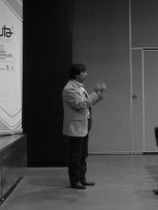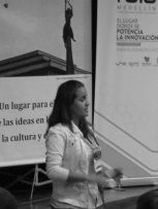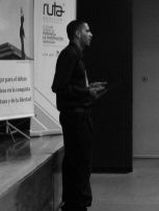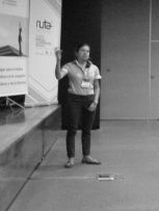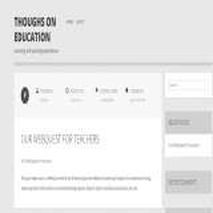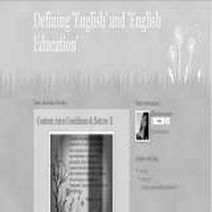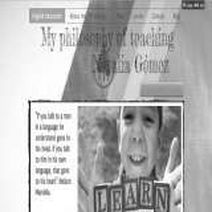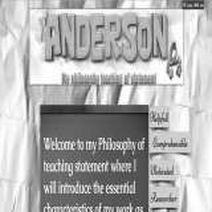What is Multimodality?
The notion of Multimodality (Kress, 1997, 2010; Mora, 2019) describes how we can integrate multiple modes (understood as semiotic resources) such as written words, images, colors, sounds, etc., to create more complex messages with richer meanings than what one would achieve using one mode.
The main consideration when creating multimodal messages, then, relates to what kind of messages we want to create and what sense of meaning and intention we bring to their design. If one doesn't keep in mind the intention and sense of meaning as precursors to the actual design, one may have messages with multiple modes, yet they might not be truly multimodal.
If you want to read an alternate definition of multimodality, I invite you to read this micro-paper by María Camila Mejía-Vélez and Tatiana Salazar Patiño, two teacher researchers at LSLP. You can also look at the graphic organizers in the images below.
The main consideration when creating multimodal messages, then, relates to what kind of messages we want to create and what sense of meaning and intention we bring to their design. If one doesn't keep in mind the intention and sense of meaning as precursors to the actual design, one may have messages with multiple modes, yet they might not be truly multimodal.
If you want to read an alternate definition of multimodality, I invite you to read this micro-paper by María Camila Mejía-Vélez and Tatiana Salazar Patiño, two teacher researchers at LSLP. You can also look at the graphic organizers in the images below.
For follow up, you can also watch these two videos feat. Gunther Kress and Jan Blommaert offering some thoughts around meaning-making and multimodality:
|
|
|
Multimodality in Language Education
Multimodality has become an alternative for classroom transformation, as we let students experiment with texts in more creative and meaningful ways. One major reason to play with multimodal texts in our classrooms is, in fact, our students. Kress (1997) argued that children's ways of constructing text is, in fact, multimodal from the outset. Children integrate modes, their messages are synaesthetic by nature, and they see the world as the multimodal text it really is.
Now, I know there always questions and concerns when it comes to bringing multimodality into our classrooms. Here is an "unwebinar" featuring a bunch of "Obnoxious Academics" talking about this in a very down-to-earth fashion. I'd suggest looking at this to clear your doubts before you embark on this journey:
Now, I know there always questions and concerns when it comes to bringing multimodality into our classrooms. Here is an "unwebinar" featuring a bunch of "Obnoxious Academics" talking about this in a very down-to-earth fashion. I'd suggest looking at this to clear your doubts before you embark on this journey:
After this introduction, let us take a look at what some efforts to work with multimodality in class looks like. I have compiled a few samples from my teacher education courses for your consideration:
Profiling Literacies in Today's Classrooms
One of my first experiences with multimodality took place in my graduate seminars on literacies. One of the assignments involved designing multimodal texts where students would reflect on they were revisiting literacy in their workplaces in light of the class readings and discussions. Their essays are available both on the course blog and the YouTube playlist below:
Multimodal Response Papers
It is my belief that if you provide students with a challenge that's both enticing and challenging, they will find ways to step up to the challenge. My students in Communicative Competence V (2014) developed multimodal response papers. They used different media to post their messages: Most of them used YouTube; a few used Prezi or SlideShare (I have placed some examples of these presentations on the Slam Poetry page).
While I believe all the responses were absolutely well done, there's one in particular that deserves extra praise: Four students learned the hard way never to pitch an idea that's insane enough for me to say, "Make it happen." (It's because of them that I actually instituted "Rule #5"!) They suggested going Glee on the assignment and create a musical response paper. See for yourselves what they did. I think it's a really nice example of what multimodality looks like.
While I believe all the responses were absolutely well done, there's one in particular that deserves extra praise: Four students learned the hard way never to pitch an idea that's insane enough for me to say, "Make it happen." (It's because of them that I actually instituted "Rule #5"!) They suggested going Glee on the assignment and create a musical response paper. See for yourselves what they did. I think it's a really nice example of what multimodality looks like.
Multimodality Symposium
On August 8, 2014, a group of four students and the good doctor held a symposium at the 5th International Seminar of Professional Development of Foreign Language Teachers at Universidad de Antioquia. The symposium titled Multimodality as Reflexivity on Literacy and Teaching: Examples from Undergraduate and Graduate Teacher Education summarized some of the experiences that I have shared on this page. Below you will find the links to all the Prezi presentations (just click on the pictures):
Philosophy of Teaching Statement
Between 2014 and 2016, I taught a preservice methods course titled Content Area Conditions & Nature. For the capstone project, they had to profile their early philosophy of teaching statement. They relied on YouTube, Prezi, websites, and blogs as tools. The results show interesting examples of how young teachers develop their identities and prepare themselves to face their craft in the future:
2014 Projects
2016 Projects
Methods and Approaches in the Teaching of Languages - #MATLUPB
Making multimodal essays is one of my favorite assignments. It combines the use of technological tools with the need to develop academic discourse. Composing these essays was one of the ideas that I revisited when I took over the undergraduate course "Methods and Approaches in the Teaching of Languages" (#MATLUPB) in 2016. The multimodal essays that comprise this assignment all deal with the students' views about what 21st-century language education should consider.
Although all the projects from #MATLUPB appear on the playlist above, there is one I want to highlight here: In the first semester of 2020, as our students and faculty had to make the move to Emergency Remote Teaching, the students (all 23 of them!) in that course embarked on creating a collective video that brought together their feelings during the transition and their considerations for remote teaching in the near future. The result was a very thoughtful video, blending theory, practice, and their feelings. Take a moment to check it out!
Here is also this video from 2021 about mulitmodality in classrooms and the experiences from two teacher-researchers at the Literacies in Second Languages Project.
To Learn More About Multimodality
In this section, I have curated some additional resources to learn even more about multimodality:
- Mary Kalantzis' and Bill Cope's New Learning site. In addition to first-class resources on literacies, they have further information on multimodality and multiliteracies. Here is also two short videos where Kalantzis and Cope discuss some ideas about multimodality and design:
|
|
|
- The Mode: Multimodal Methodologies project at the University of London.
- In 2013, we had the honor to host Professor Brian Street at the (now over) ML2 Open Lecture Series discussing New Literacy Studies and multimodality. Here's the video from that lecture:
- Here is a four-video series on YouTube featuring (once again) Gunther Kress talking about multimodality:
|
|
|
|
|
|
- This extended webinar from the Literacy Research Association (LRA) features a panel of literacy scholars discussing the links between multimodality and writing (click here for additional information and resources related to this webinar):
- This webinar by recognized Colombian scholar Dr. José Aldemar Álvarez about multimodality in language education:
Here are some other links that provide suggestions for activities:
- https://www.teachingenglish.org.uk/blogs/larissa84/larissa-albano-or-without-technology
- http://mediashift.org/2011/11/teaching-without-technology-314/
- http://philly-teacher.blogspot.com.co/2009/08/teaching-without-technology.html
- http://www.readwritethink.org/classroom-resources/lesson-plans/critical-literacy-action-multimodal-1139.html
- http://classroom.synonym.com/multimodal-teaching-strategies-12049345.html
- http://www.iag-online.org/resources/2015-Handouts/Corcoran/EJMultimodalLiteracies.pdf
- https://prezi.com/gaipk9s5hobu/multimodal-activities-for-your-composition-classroom/
- http://www.readwritethink.org/professional-development/strategy-guides/teaching-with-multiple-modalities-30101.html



